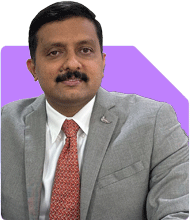Dr Vinod Kumar | Answer |Ask -Follow
Kidney Health Specialist - Answered on Apr 25, 2023
Dr Kumar completed his MBBS from JSS Medical College, Mysuru, followed by an MD in internal medicine from the Karnataka Institute of Medical Sciences, Hubballi. He has a DNB in nephrology from St John's Medical College, Bengaluru.... more

I am 51 year old , since last 1 year I could see foam in my urine . Do I need to consult a doctor?
You may like to see similar questions and answers below
Dr Vinod Kumar | Answer |Ask -Follow
Kidney Health Specialist - Answered on Jan 30, 2024
Dr Vinod Kumar | Answer |Ask -Follow
Kidney Health Specialist - Answered on Feb 02, 2024
Dr Vinod Kumar | Answer |Ask -Follow
Kidney Health Specialist - Answered on Feb 14, 2024
Dr Vinod Kumar | Answer |Ask -Follow
Kidney Health Specialist - Answered on Mar 08, 2024
Reetika Sharma |459 Answers |Ask -Follow
Financial Planner, MF and Insurance Expert - Answered on Dec 24, 2025
Reetika Sharma |459 Answers |Ask -Follow
Financial Planner, MF and Insurance Expert - Answered on Dec 24, 2025
Reetika Sharma |459 Answers |Ask -Follow
Financial Planner, MF and Insurance Expert - Answered on Dec 24, 2025
Reetika Sharma |459 Answers |Ask -Follow
Financial Planner, MF and Insurance Expert - Answered on Dec 24, 2025
Reetika Sharma |459 Answers |Ask -Follow
Financial Planner, MF and Insurance Expert - Answered on Dec 24, 2025
Reetika Sharma |459 Answers |Ask -Follow
Financial Planner, MF and Insurance Expert - Answered on Dec 24, 2025
Reetika Sharma |459 Answers |Ask -Follow
Financial Planner, MF and Insurance Expert - Answered on Dec 24, 2025
Reetika Sharma |459 Answers |Ask -Follow
Financial Planner, MF and Insurance Expert - Answered on Dec 24, 2025
Reetika Sharma |459 Answers |Ask -Follow
Financial Planner, MF and Insurance Expert - Answered on Dec 24, 2025
Reetika Sharma |459 Answers |Ask -Follow
Financial Planner, MF and Insurance Expert - Answered on Dec 24, 2025





















